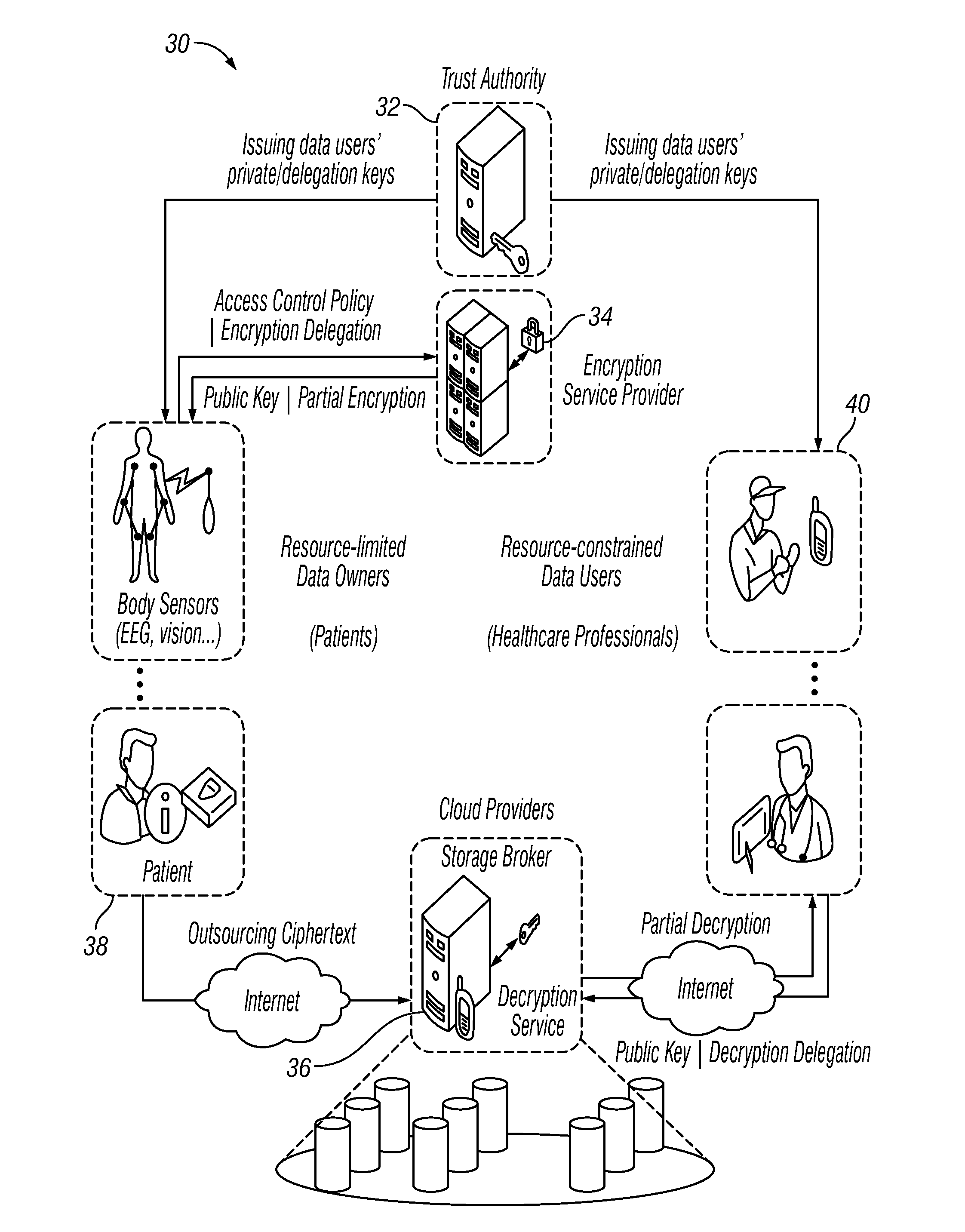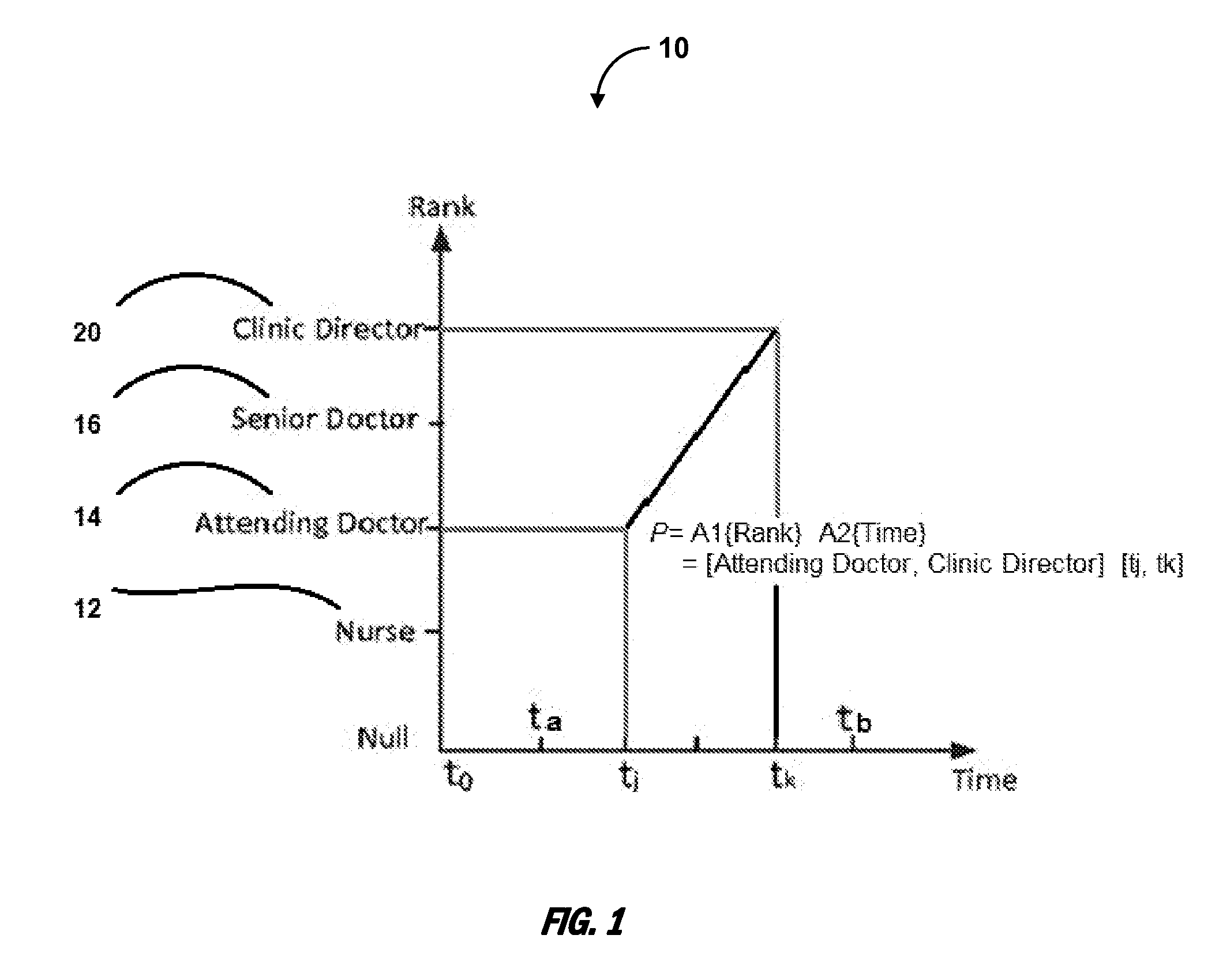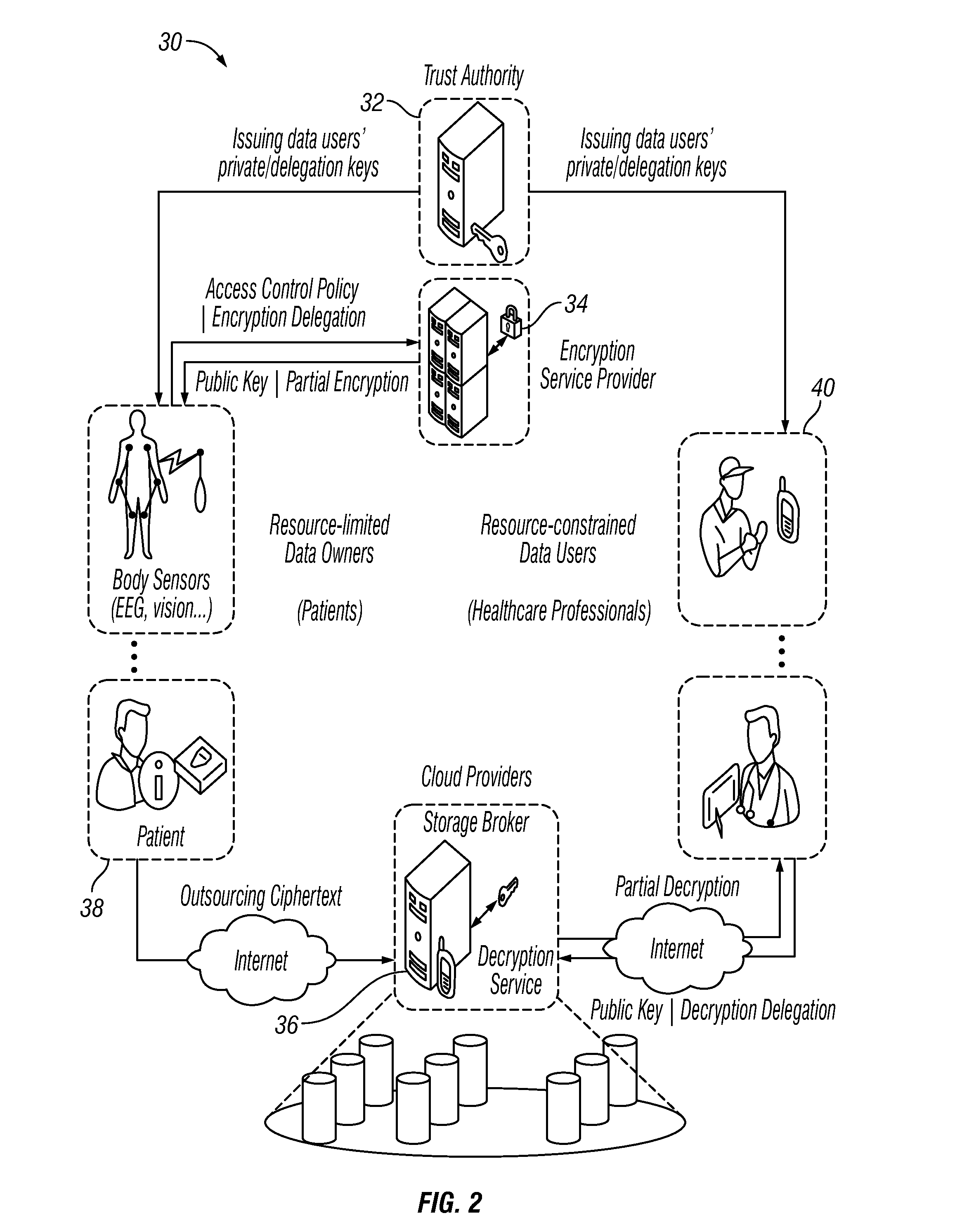Enabling Comparable Data Access Control for Lightweight Mobile Devices in Clouds
a mobile device and cloud technology, applied in the field of encryption, can solve the problems of high key management overhead, significant system complexity, and inability to fully trust data owners in the cloud, and achieve the effect of less flexible attribute structure and efficiency
- Summary
- Abstract
- Description
- Claims
- Application Information
AI Technical Summary
Benefits of technology
Problems solved by technology
Method used
Image
Examples
exemplary embodiment 50
[0080]FIG. 3 depicts an exemplary embodiment 50 that illustrates exemplary attribute range relations used in the disclosed CCP-CABE scheme. As illustrated in FIG. 3. a data owner can apply any one of the following attribute range relations 52 {R, R′, R− R*} over each attribute Ai, such that the data user u's attribute ranges Lu can satisfy the designated attribute range relations over all the attributes to access the resources. In certain embodiments, R can imply that the attribute ranges Lu should completely satisfy P on Ai, and it holds if ([ti,j, ti,k]\[ti,a, ti,b]=)([ti,j, ti,k]∩[ti,a, ti,b]≠). On the contrary, R′ can imply that the attribute ranges Lu only need to partially satisfy P on Ai, and it holds if ([ti,j, ti,k]\[ti,a, ti,b]≠)([ti,j, ti,k]∩[ti,a, ti,b]≠).
[0081]In addition, in certain embodiments, R− may imply that access control policy P may designate that an eligible data user must not own attribute Ai, which is classified as a negative attribute. In certain embodi...
exemplary embodiment 60
[0111]FIG. 4 depicts an exemplary embodiment 60 that illustrates how the disclosed CCP-CABE scheme can adapt for multiple different range relationships. Two simple examples may be used to illustrate how CCP-CABE can adapt for multiple different range relationships
[0112]In the telemedicine example of FIG. 1, a data owner applies the range relationship R, R′ over attributes A1, A2 respectively in the access control policy P. The “Time” attribute 62 takes value out of the integer set {t1,0, t1,1, t1,2, t1,3, t1,4, t1,5} representing different timestamps, and the “Rank” attribute 64 takes value from the integer set {t2,0, t2,1, t2,2, t2,3, t2,4, t2,5} representing different positions in a clinic. It can be learnt that the attribute ranges of the data user are Lu={[t1,1, t1,5], [t2,3, t2,3]}, and the attribute range constraints designated by the data owner are {[t1,2, t1,4], [t2,1, t2,4]}. The CCP-CABE may then perform the following operations associated with MRDF. For example, the algor...
PUM
 Login to View More
Login to View More Abstract
Description
Claims
Application Information
 Login to View More
Login to View More - R&D
- Intellectual Property
- Life Sciences
- Materials
- Tech Scout
- Unparalleled Data Quality
- Higher Quality Content
- 60% Fewer Hallucinations
Browse by: Latest US Patents, China's latest patents, Technical Efficacy Thesaurus, Application Domain, Technology Topic, Popular Technical Reports.
© 2025 PatSnap. All rights reserved.Legal|Privacy policy|Modern Slavery Act Transparency Statement|Sitemap|About US| Contact US: help@patsnap.com



